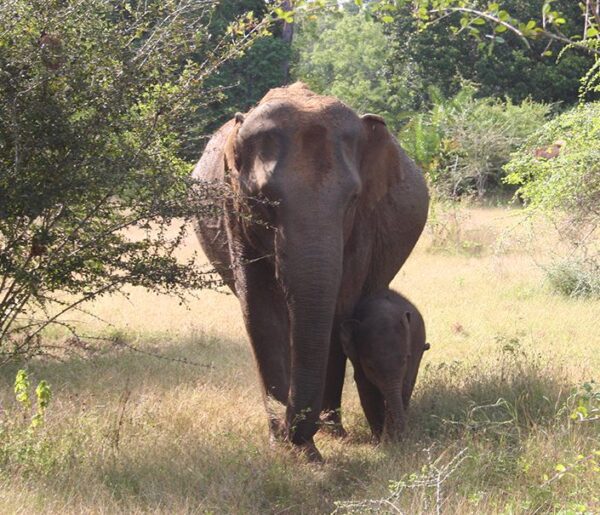More than 3 million square kilometers of the Asian elephant’s historic habitat range has been lost across Asia in just three centuries, according to a report published Thursday by an international scientific team led by a UC San Diego researcher.
UCSD professor Shermin de Silva’s team found that habitats suitable for Asian elephants have been cut by nearly two-thirds within the past 300 years.
The endangered elephants once inhabited grasslands and rainforest ecosystems spanning the Asian continent. By analyzing land-use data from the years 850 to 2015, the researchers estimate in the journal Scientific Reports that more than 64% of historic suitable elephant habitat across Asia has been lost — a majority since the 1700s, owing to colonial-era land-use practices in Asia, including timber extraction, farming and agriculture.
“In the 1600s and 1700s there is evidence of a dramatic change in land use, not just in Asia, but globally,” said de Silva, an assistant professor in UCSD’s School of Biological Sciences Department of Ecology, Behavior and Evolution, and founder of the elephant-focused nonprofit Trunks & Leaves. “Around the world we see a really dramatic transformation that has consequences that persist even to this day.”
The study also suggests that the remaining elephant populations today may not have adequate habitat areas, setting up a high potential for conflicts with people living in those areas as elephant populations alter their behavior and adjust to more human-dominated spaces.
Beyond the immediate impact on Asian elephants, the researchers said the study offers the results as a mechanism to assess land-use practices and conservation strategies for all of the area’s inhabitants.
“We’re using elephants as indicators to look at the impact of land-use change on these diverse ecosystems over a longer time scale,” de Silva said in a statement.
Climate change is also thought to have accelerated habitat decline over the past century, but assessing the impact of such changes on wildlife over the long-term has been difficult to study due to the lack of historical records, researchers said.
The findings published Thursday were based on information from Land-Use Harmonization data produced by researchers at the University of Maryland. The data set provides historical reconstructions of various types of land uses — including forests, crops, pastures and other types — that reach back to the ninth century, the researchers said.
“We used present-day locations where we know there are elephants, together with the corresponding environmental features based on the LUH data sets, to infer where similar habitats existed in the past,” said de Silva. “In order for us to build a more just and sustainable society, we have to understand the history of how we got here.”
More work, the authors argue, is needed to understand possible changes facing these habitats in the future. The researchers caution that attempts at habitat restoration “need to be guided under a reckoning of social and environmental justice for historically marginalized communities.”
“Exploring the relationship between past land management practices and the distributions of elephant ecosystems would be a useful direction for future studies from the perspectives of both ecological and social policy,” they wrote in the report.







